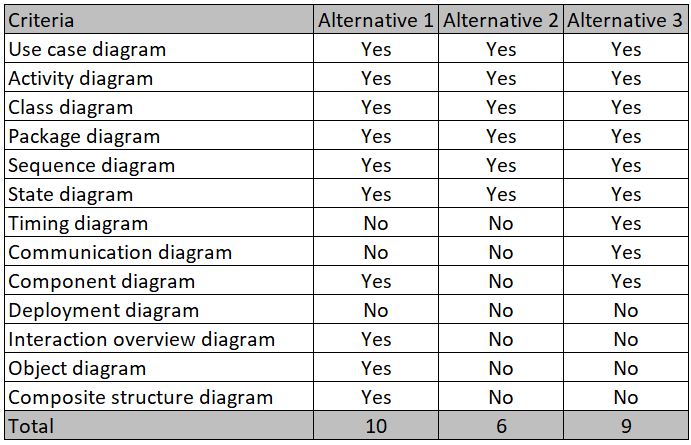What is a Decision Matrix?
Smartpedia: A decision matrix is a tool for selecting the best option, taking defined criteria into account.
Making rational decisions with defined criteria
A decision matrix is a tool for selecting the best alternative from various options, taking defined criteria into account. It is a table that arranges different decision options or alternatives in columns and criteria or properties in rows. The fulfilment of the criteria can be judged, for example, by entering “Yes” or “No” or a number-based evaluation (e.g. from 1 to 10). Depending on the rating, the numbers or the positive or negative values are summed. The decision is made for the alternative with the highest sum or the most positive ratings.
In decision theory, the decision matrix is regarded as an extension of the result matrix. This matrix presents alternative actions, environmental conditions and the resulting outcomes in tabular form. Each outcome is then assigned a (possibly weighted) benefit or utility value and the alternative with the highest total utility value wins the decision.
Simple and weighted decision matrix
Here is an example of a simple decision matrix. Alternative 2 receives the highest rating total and is therefore the right decision.

Since not all criteria are equally important in decision-making practice, they are often weighted by separate factors. Here is an example with a weighted decision matrix.

The decision matrix in practice
In practice, the decision matrix is frequently used, e.g. when selecting software (see example: Selecting UML software based on supported UML diagram types).

This results in various findings for practical use:
- The mere existence of a criterion in an alternative says nothing about the quality of the criterion.
- The amount of criteria – i.e. the quantity – influences the alternative to be chosen.
- The weighting of the criteria is essential for decision making.
- Decisions based on weighted criteria are not always rational and objective. On the contrary, they can even be very subjective. If an employee supports a certain alternative, he could try to weight a criterion – e.g. the user-friendliness, for which there is no measure of correct assessment per se – very highly. This increases the chances for “his” alternative.
- The actual evaluation of a criterion should ideally be as objective as possible; in practice, however, it is also often subjective.
If both the evaluation of individual criteria and the weighting of the criteria can be subjective, is the use of a decision matrix worthwhile at all? In general, this question cannot be answered because the answer depends on the degree of subjectivity. In other words: the more objective and rational the decision matrix is filled, the better the decision should be.
Difference to other tools of decision making
Even if a decision matrix tries to find decisions based on a table, the terms decision matrix and decision table differ. A decision table visualises groups of business or decision rules and thus provides instructions for action in concrete situations. Example: If the invoice was issued by the supplier and these were not paid by the customer within 14 days, then a reminder is sent.”
Decision tables are often supplemented by decision trees. A decision tree displays a multi-stage decision process with all decision options.
The Pugh Matrix is also a tabular decision aid that compares competing concepts or alternatives with a basic concept in order to evaluate them.
Notes:
Here you will find additional information from our t2informatik Blog:


